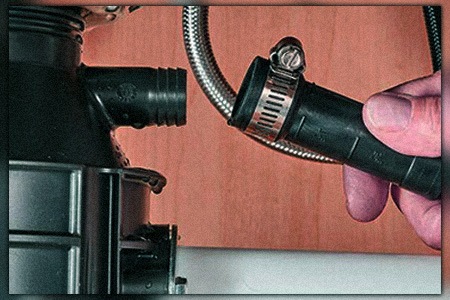What are your beliefs about Why Is ?

Garbage disposals are vital kitchen devices that aid in disposing of food waste successfully. However, a dripping garbage disposal can be a frustrating and untidy problem to take care of. Fortunately, many leaks can be dealt with conveniently with a few straightforward steps. In this post, we will certainly discuss exactly how to deal with a leaking waste disposal unit effectively.
Introduction
Garbage disposals are installed under kitchen area sinks and are developed to shred food waste right into smaller sized pieces, allowing it to go through the pipes system conveniently. While these tools are generally trustworthy, leakages can happen in time because of deterioration, loosened connections, or damages to the system.
Typical Root Causes Of Leaks in Trash Disposals
Worn Seals and Gaskets
Seals and gaskets play a vital duty in preventing water from dripping out of the waste disposal unit. Over time, these parts can wear away, resulting in leakages around the disposal device.
Loose Connections
The connections in between the garbage disposal and the pipes system can become loosened over time, creating water to leak out throughout procedure.
Splits or Holes in the Disposal Device
Physical damage to the waste disposal unit, such as fractures or holes in the housing, can additionally lead to leakages.
Determining the Resource of the Leakage
Before attempting to deal with a leaking waste disposal unit, it is necessary to identify the resource of the leak. This can normally be done through visual assessment or by carrying out straightforward tests.
Visual Evaluation
Evaluate the waste disposal unit unit meticulously for any type of signs of water leakage. Pay close attention to locations around seals, gaskets, and link points.
Testing for Leaks
One method to check for leaks is by running water with the disposal system and looking for any type of visible indications of leakage.
Tools and Products Needed for Taking Care Of a Leaking Waste Disposal Unit
Before beginning the repair process, collect the necessary tools and products, consisting of a screwdriver, adjustable wrench, plumbing professional's putty, substitute seals or gaskets, and epoxy or patching material for repairing splits or holes.
Step-by-Step Guide to Repairing a Leaking Waste Disposal Unit
Turn Off the Power
Prior to attempting any type of repair services, guarantee that the power to the waste disposal unit unit is switched off to avoid the threat of electrical shock.
Find the Leakage
Determine the precise area of the leak and identify the reason.
Tighten Connections
Make use of a wrench to tighten up any loose links in between the disposal unit and the pipes system.
Change Seals or Gaskets
If the leak results from worn seals or gaskets, eliminate the old elements and change them with brand-new ones.
Patching Cracks or Holes
For splits or holes in the disposal unit, usage epoxy or an ideal patching product to secure the damaged area.
Checking the Waste Disposal Unit After Fixing
As soon as the fixing is total, check the waste disposal unit by running water via it to make certain that the leakage has actually been dealt with.
Preventive Maintenance Tips to Avoid Future Leakages
To stop future leaks, it is necessary to execute regular upkeep on your garbage disposal. This includes maintaining it tidy, staying clear of putting non-food items or tough items down the disposal, and periodically looking for leaks or other concerns.
Verdict
In conclusion, taking care of a dripping waste disposal unit is a reasonably simple procedure that can be finished with basic devices and materials. By complying with the steps laid out in this short article and exercising preventive upkeep, you can keep your waste disposal unit in good working condition and prevent expensive fixings in the future.
What to Do About a Leaking Garbage Disposal
A leaking garbage disposal often goes unnoticed until you confront a sopping cabinet, a foul-smelling puddle, or an audible drip-drip-drip from the unit. The fix can be frustrating, too, because the leak can stem from a number of components in the system. Fortunately, with a little sleuthing, you can zero in on the leak and—depending on the exact location—stop the icky oozing and repair the component that caused it. Worst case scenario, if it turns out that the garbage disposal must be replaced, installing a new one is a reasonable do-it-yourself task for those with basic plumbing skills. Read on to keep the cash you’d otherwise hand over to a pro.
Prepare to find the leak
Prior to testing the garbage disposal for leaks, unplug it at the wall outlet and turn off the power from the breaker box to prevent electrical shock. Then insert a watertight sink stopper into your sink drain and wipe the unit dry with a clean cloth. In any handy container, mix a few drops of food coloring into a few cups of water, and pour the dyed water onto the sink stopper to help you locate the leak.
Investigate the source
the top, where the disposal meets the sink drain the side, where the dishwasher hose or main drain pipe connects to the disposal or the bottom of the unit Inspect each of these locations while gliding a light-colored rag over the unit; the dyed water will readily show on the rag and reveal the location of the leak. If a leak isn’t immediately apparent, remove the sink stopper and pour a few more cups of dyed water down the sink drain, then check for leaks again. Leaks near the top of the unit are more likely to show themselves while the sink is plugged, while side and bottom leaks are more noticeable while the sink is unplugged.
The metal sink flange that sits directly inside the sink drain is typically sealed around the top with plumber’s putty (a clay-like sealant) and then secured from under the sink with bolts. If the plumber’s putty deteriorates, or the bolts loosen, the flange can no longer form a watertight seal between the sink drain and the disposal—which could cause a leak at the top of the unit.
To reseal the leaky flange, you must first detach the garbage disposal. Start by loosening the screws securing the main drain pipe to the disposal, then loosen the screws in the metal clamp securing the dishwasher hose to the disposal and detach the drain pipe and dishwasher hose from the disposal. Loosen the screws in the mounting ring that connects the disposal to the metal mounting assembly beneath the sink, then pull down the disposal and carefully set it on a clean, dry surface. Loosen the bolts in the mounting assembly with a wrench, then pull down the mounting assembly and set it near the disposal.

I was brought to that article about Why Is from a friend on another web property. Please take the opportunity to promote this entry if you enjoyed it. I truly appreciate reading our article about Garbage Disposal Leaking From Bottom.
Check It Out